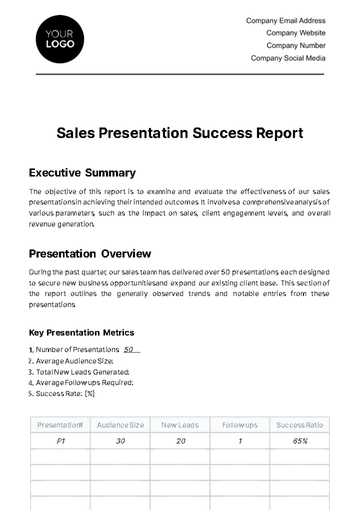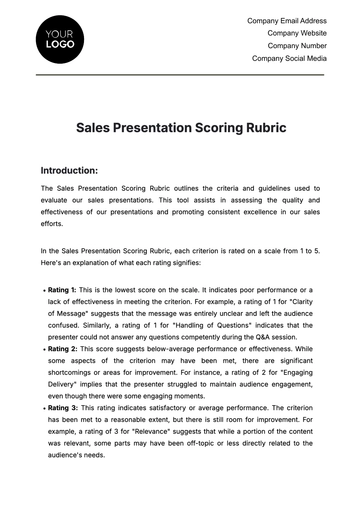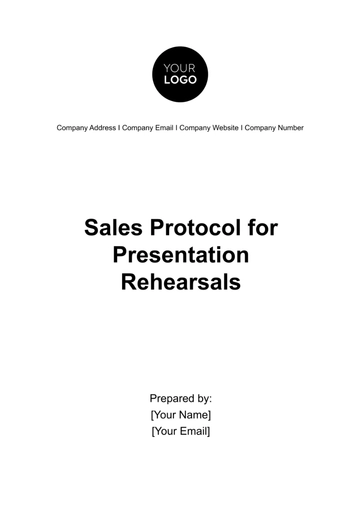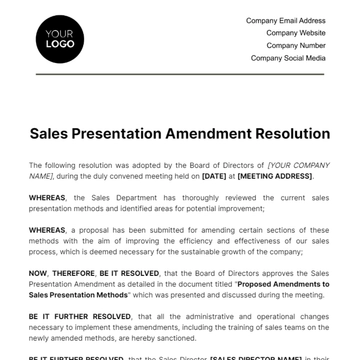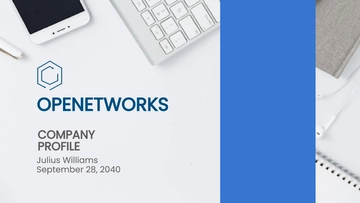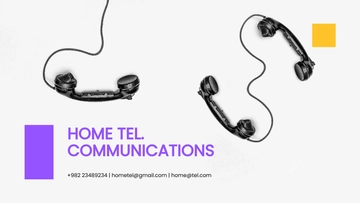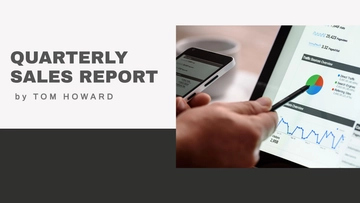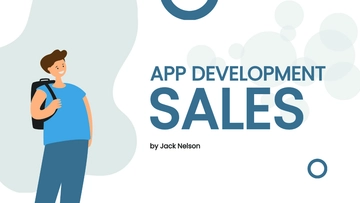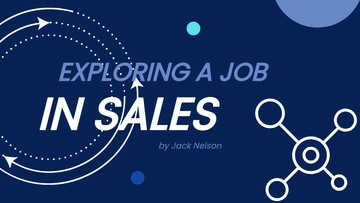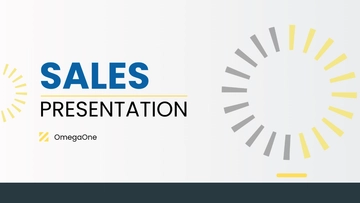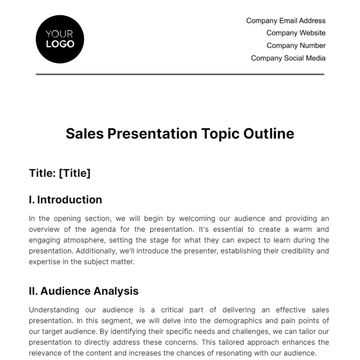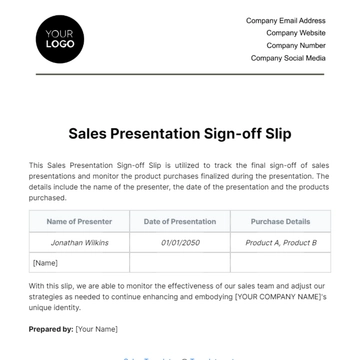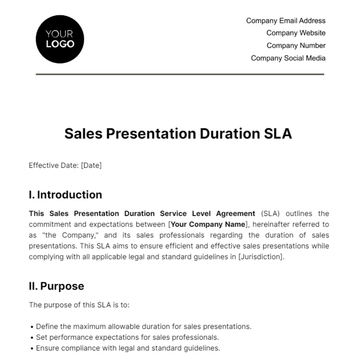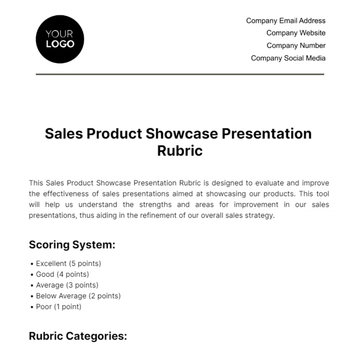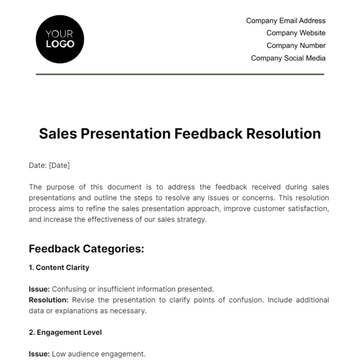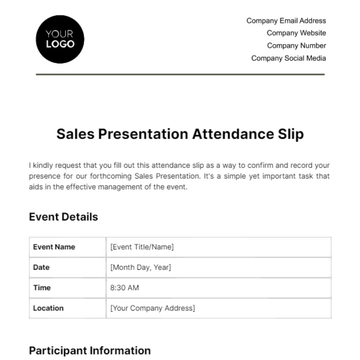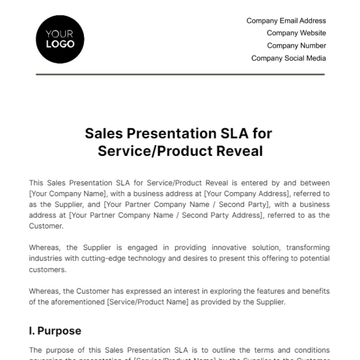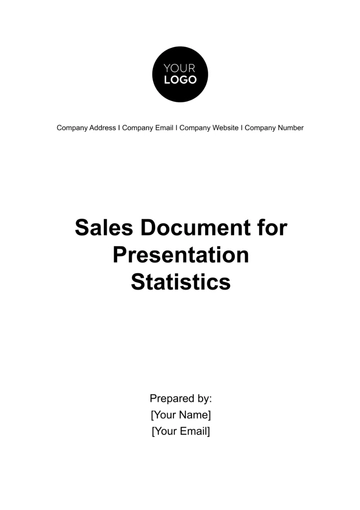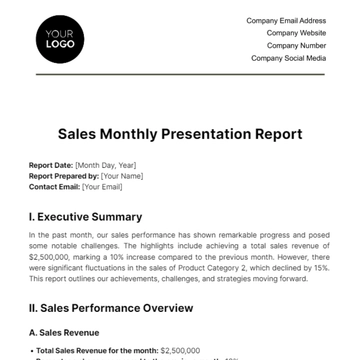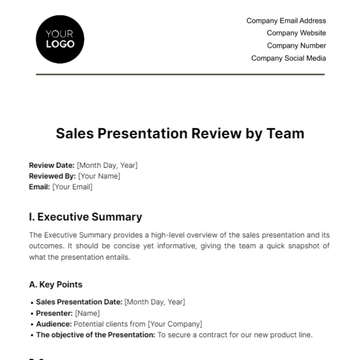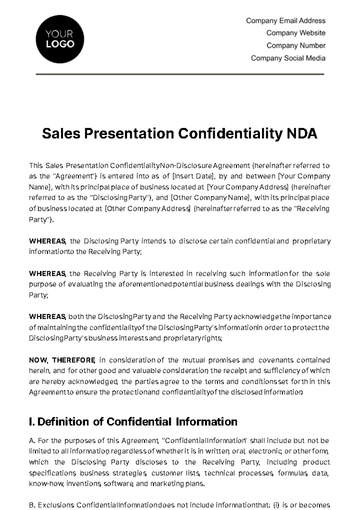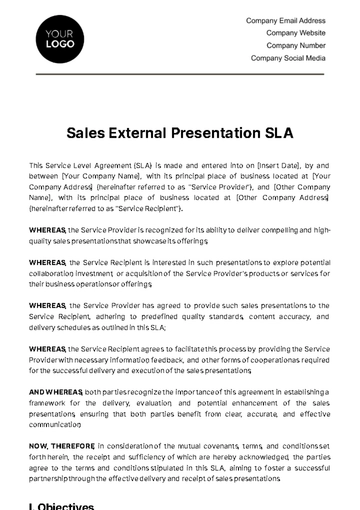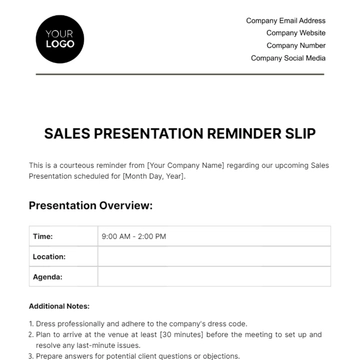Free Sales Presentation Feedback Research

In the increasingly competitive business environment, the effectiveness of sales presentations has become critical to organizational success. This research aims to provide insights on Sales Presentation Feedback and the factors contributing to its efficiency.
Sales presentations are crucial in establishing a connection with potential clients, influencing their perceptions about the product or service, and ultimately driving sales. Regular feedback aids in the continuous improvement of these presentations making them more compelling and persuasive. This research explores different aspects of Sales Presentation Feedback and its impact on the overall sales performance.
1. Introduction to Feedback Research
In the field of sales, where every pitch, every interaction, and every moment can make the difference between success and missed opportunities, the value of continuous improvement cannot be overstated. The [Company Name] Sales Presentation Feedback Research stands as a beacon guiding us toward sales presentation excellence. In this introduction, we delve into the purpose, importance, objectives, and the meticulous research methodology that underpins our quest for perfection.
A. Purpose and Importance
Clients are presented with a multitude of choices and information at their fingertips, and our sales presentations serve as a tool for communication and persuasion. It is here, within the confines of these presentations, that we have the opportunity to captivate our audience, to educate them, and to inspire action. Therefore, the significance of our Sales Presentation Feedback Research is rooted in its ability to fortify our efforts and ensure that every presentation resonates profoundly with our clients.
Consider the following data: A study by McKinsey & Company reveals that effective sales presentations can increase win rates by up to 20%. Furthermore, the Harvard Business Review asserts that presentations with a clear and compelling message are twice as likely to be successful. These statistics underscore the critical role that our sales presentations play in shaping our success.
B. Objectives
As we embark on this journey of feedback research, our objectives stand as guiding stars, illuminating our path to excellence. We seek to achieve the following:
Identify strengths and weaknesses in our sales presentations: By dissecting feedback with surgical precision, we aim to uncover the aspects of our presentations that shine brilliantly and those that require polishing. This introspection enables us to refine our strategies continually.
Gather insights on audience engagement, clarity, and impact: We understand that the true measure of a presentation's success lies not in our words but in their resonance with our audience. Thus, we seek to glean insights into the engagement levels of our clients, the clarity of our messaging, and the lasting impact we leave behind.
Improve our sales representatives' presentation skills: Our sales representatives are the frontline ambassadors of our brand. Their ability to convey our value proposition with finesse is pivotal. Through this research, we endeavor to provide them with the tools and knowledge needed to elevate their presentation skills to new heights.
C. Research Methodology
The strength of any research lies in its methodology, and our Feedback Research is no exception. To ensure the richness and depth of our findings, we have employed a multifaceted approach to data collection.
Our toolbox includes post-presentation surveys meticulously designed to extract candid feedback, one-on-one interviews with our valued clients to delve into nuanced perspectives, and the analysis of recorded presentations to scrutinize every word, every gesture, and every moment of truth. This diversity in our research methodology ensures a comprehensive understanding of our performance, leaving no stone unturned.
As we delve into the field of feedback research, let us keep in mind the words of Thomas Edison, who famously said, "I have not failed. I've just found 10,000 ways that won't work." Our journey is one of continual learning, refinement, and evolution. The insights we gather will be the building blocks of a brighter, more effective future in sales presentation excellence.
2. Data Collection and Analysis
In the field of sales presentation refinement, our journey begins with the collection and meticulous analysis of data—the foundation upon which our quest for excellence rests. In this section, we unveil the comprehensive process we undertook to gather feedback, followed by the careful analysis that uncovered invaluable insights into our presentations.
A. Feedback Gathering
The foundation of our Feedback Research lies in the voices of our clients, the experiences of our internal sales team members, and the critical eye of recorded presentations. Our data collection endeavors reached deep into the heart of client interactions, ensuring a holistic view of our performance.
Surveys After Each Client Interaction: Post-presentation surveys were meticulously designed and thoughtfully distributed after every client interaction. These surveys provided our clients with the opportunity to express their opinions candidly, offering glimpses into their unfiltered thoughts.
In-depth Interviews: Beyond surveys, we engaged in one-on-one interviews with our valued clients. These conversations went beyond the surface, delving into nuanced perspectives and unearthing hidden gems of feedback. Such interviews provided the qualitative depth necessary to comprehend the intricacies of our clients' experiences.
B. Data Analysis
Our analysis focused on a multitude of key metrics, each revealing a distinct facet of our presentation effectiveness. These metrics encompassed:
Audience Engagement Levels: We scrutinized the levels of engagement our presentations achieved, recognizing that engagement is the lifeblood of effective communication.
Clarity of Messaging and Content: Clarity is the bridge that connects our ideas with our audience's understanding. Our analysis dissected the clarity of our messaging and content to the minutest detail.
Audience Questions and Concerns: By meticulously cataloging and analyzing audience questions and concerns, we painted a comprehensive picture of the areas in which our clients sought clarity.
Interaction Patterns During Presentations: We examined the ebb and flow of interactions during our presentations, discerning the moments that captivated us and those that required enhancement.
Sentiment Analysis: Our toolbox extended to sentiment analysis, allowing us to gauge the emotional tenor of our audience's reactions.
C. Identifying Trends and Patterns
Clients' Appreciation of Product Knowledge: One shining revelation was the high regard clients hold for our product knowledge. Our commitment to being experts in our field bore fruit in the form of client appreciation.
Clarity in Explaining Complex Concepts: However, the pursuit of perfection is marked by challenges, and our analysis illuminated a particular area where we could refine our approach. In some instances, presentations lacked the clarity needed to explain complex concepts comprehensively.
Common Concerns About Pricing: Pricing emerged as a recurring concern among our clients. Their questions and apprehensions were noted, signaling an opportunity to enhance our communication in this critical aspect of our presentations.
In the world of data-driven refinement, these trends and patterns are not mere observations but the guiding lights that will lead us to more effective and impactful sales presentations. The path forward is clear: it is one of continuous learning, adaptation, and a relentless commitment to meeting and exceeding our clients' expectations.
3. Presentation Enhancement Recommendations
In this section, we present a comprehensive array of enhancement recommendations—thoughtful and pragmatic actions that emerged from our analysis. These recommendations have been meticulously crafted to bolster our strengths and address our weaknesses, ushering in a new era of presentation excellence.
A. Strengths and Weaknesses
We take pride in acknowledging our distinct strengths, which include:
In-depth Product Knowledge: Our unwavering commitment to being experts in our field shines brightly. Clients' appreciation for our comprehensive product knowledge underscores the value of this foundation.
Engaging Storytelling Abilities: We possess the ability to weave narratives that captivate and resonate. Our storytelling prowess is an asset that fosters connections with our audience.
Yet, as in any pursuit of excellence, our analysis brought to light areas where we can evolve:
Occasional Lack of Clarity in Technical Explanations: In some instances, the complexity of technical explanations acted as a veil, obscuring the brilliance of our solutions. Clarity in these moments is paramount.
Inconsistencies in Addressing Pricing Concerns: Pricing, a pivotal aspect of our presentations, saw inconsistencies in our responses. Addressing this concern with consistency is paramount to instilling client confidence.
B. Actionable Recommendations
Strengths celebrated, and weaknesses acknowledged, we present a strategic roadmap forward—a set of actionable recommendations that will propel us toward presentation excellence.
To Address Identified Weaknesses, We Propose the Following Actions:
Conduct Specialized Training in Simplifying Complex Concepts: Complexity should never be a barrier. Specialized training modules will empower our team to distill intricate ideas into clear, comprehensible concepts. As Albert Einstein once said, "If you can't explain it simply, you don't understand it well enough."
Develop Standardized Responses to Pricing Inquiries: Pricing inquiries demand consistent and transparent responses. Developing standardized responses, rooted in our pricing strategy, ensures clarity and uniformity in our communication.
Introduce More Interactive Elements in Presentations: Engagement is the heartbeat of effective presentations. We propose the introduction of interactive elements that maintain audience engagement, transforming passive listeners into active participants.
C. Customization Strategies
One size rarely fits all, and the world of sales presentations is no exception. We advocate for the strategic customization of our presentations—a dynamic approach tailored to the unique needs, demographics, and preferences of our diverse audience.
We Recommend Tailoring Presentations Based on Audience Demographics and Preferences:
Adapt Content and Tone to Align with Specific Industries: Industries possess their own vernacular and culture. Adapting our content and tone to align with specific industries fosters resonance and a sense of familiarity.
Address Typical Objections Raised by Different Client Types: Different client types may raise typical objections. Anticipating and addressing these objections demonstrates proactive engagement and a deep understanding of our clients.
As we embark on this journey of evolution, let us recall the words of Winston Churchill, who once said, "To improve is to change; to be perfect is to change often." The path ahead is one of continuous learning, refinement, and adaptation—an unwavering commitment to elevating our sales presentations to greater heights of excellence.
4. Implementation Strategies
In this section, we illuminate the path forward, unveiling the strategies we will employ to implement our enhancement recommendations. These strategies are not merely a blueprint; they are a living testament to our unwavering commitment to translating insight into excellence.
A. Prioritization
Not all enhancements are created equal; some bear more immediate impact, while others ripple outward over time. To navigate this landscape effectively, we must allocate our resources wisely.
Among the gems unearthed in our analysis, two glitter-like diamonds:
Clarity Enhancement: The occasional lack of clarity in our technical explanations poses a roadblock to comprehension—a challenge that must be overcome.
Pricing Concerns: Pricing is the keystone of our presentations. Inconsistencies in addressing pricing concerns have the potential to erode trust. Addressing these concerns with precision and consistency is paramount to client satisfaction.
B. Implementation Plan
We have charted a meticulous implementation plan that will serve as our guiding star—the conduit through which our enhancement recommendations will materialize.
Detailed Steps, Responsibilities, and Timelines: Our plan is no mere abstraction; it is a tangible roadmap, complete with detailed steps, assigned responsibilities, and timelines. This structured approach ensures that each enhancement recommendation finds its way from concept to reality.
Scheduled Training Sessions and Content Updates: Our plan includes the scheduling of training sessions that will empower our sales representatives to simplify complex concepts and handle pricing inquiries with finesse. Simultaneously, content updates will be meticulously curated to reflect our evolving strategy. The first set of changes is expected within [X weeks], marking the initiation of our transformation journey.
C. Training and Coaching
We recognize that skills are honed through deliberate practice and refined through feedback. To this end, we have woven specialized training and ongoing coaching into our implementation strategies.
Specialized Training in Simplifying Technical Concepts: Complexity must yield to clarity. Our sales representatives will embark on a journey of specialized training designed to equip them with the skills to simplify even the most intricate technical concepts. After all, in the words of Richard Feynman, "If you can't explain it simply, you don't understand it well enough."
Handling Pricing Inquiries with Precision: Pricing is a topic of paramount importance—one that demands precision and consistency. Our training will include modules dedicated to addressing pricing inquiries transparently, ensuring that every client's concerns are met with confidence and clarity.
Ongoing Coaching and Feedback Sessions: The journey toward excellence is ongoing. Our sales representatives will engage in regular coaching and feedback sessions, where their presentation skills will be fine-tuned, and their progress will be nurtured. These sessions will serve as the crucible in which excellence is forged.
As we embark on this transformative journey, let us keep in mind the words of Maya Angelou, who famously said, "Do the best you can until you know better. Then when you know better, do better." Our commitment to 'doing better' is unwavering. Our journey toward sales presentation excellence is marked by purposeful action, deliberate improvement, and an unwavering focus on meeting and exceeding our client's expectations.
5. Monitoring and Continuous Improvement
In this section, we illuminate the path forward for monitoring and continuous improvement, setting the stage for a culture of perpetual refinement.
A. Evaluation Metrics
We have meticulously selected key performance indicators (KPIs) that will serve as the lodestar for our journey.
Monitoring Client Satisfaction Scores: Client satisfaction is the North Star by which we navigate. Monitoring client satisfaction scores, garnered through post-presentation surveys and client interactions, provides us with a clear reading of our client's contentment.
Conversion Rates as a Barometer: Conversion rates are the compass guiding our progress. They serve as a barometer of our presentation effectiveness, reflecting our ability to translate presentations into tangible outcomes.
Audience Engagement Levels as the Wind in Our Sails: Audience engagement is the wind in our sails, propelling us forward. Monitoring audience engagement levels during presentations provides insights into our capacity to captivate and inspire action.
B. Ongoing Feedback Loops
We recognize the importance of continuous feedback, and to ensure its vitality, we have established ongoing feedback loops.
Post-Presentation Surveys: Post-presentation surveys act as our antennae, capturing immediate insights from our clients. These surveys provide a real-time snapshot of their impressions and concerns, enabling us to respond swiftly and effectively.
Regular Client Check-Ins: Building relationships requires more than a one-time interaction. Regular client check-ins provide the fertile ground in which client feedback can thrive. These interactions offer a deeper understanding of evolving needs and preferences.
C. Iterative Refinement
As we receive new insights and data, we will engage in iterative refinement, adjusting our strategies and presentations accordingly.
Responding to New Insights: New insights are the catalysts of change. When fresh data and perspectives emerge, we will respond with agility and adaptability, refining our strategies to align with evolving realities.
A Culture of Continuous Improvement: At the heart of our journey is a culture—one that embraces continuous improvement as a way of life. We recognize that each interaction, each presentation, and each piece of feedback is an opportunity to evolve, learn, and grow.
As we embark on this journey of perpetual improvement, let us recall the wisdom of Aristotle, who wisely stated, "We are what we repeatedly do. Excellence, then, is not an act but a habit." Our commitment to excellence is not an event but a habit—a habit of relentless improvement, rooted in monitoring, driven by feedback, and nurtured by a culture that seeks not just to meet but to exceed our client's expectations.
- 100% Customizable, free editor
- Access 1 Million+ Templates, photo’s & graphics
- Download or share as a template
- Click and replace photos, graphics, text, backgrounds
- Resize, crop, AI write & more
- Access advanced editor
Enhance your team's sales acumen with Template.net’s Sales Presentation Feedback Research Template. This editable, customizable tool empowers marketing professionals to analyze and refine their sales strategies. Crafted for usability, the template is editable in our Ai Editor Tool - simplifying the process of creating feedback-driven presentations. Unleash your team's potential, improve your sales pitch, and influence positive business growth with our intelligent template.
You may also like
- Aesthetic Presentation
- Presentation Background
- Slide Show Presentation
- Cute Presentation
- Education Presentation
- Border Frames Presentation
- Teacher Presentation
- Professional Presentation
- Timeline Presentation
- Brand Presentation
- Promotion Presentation
- Business Presentation
- Event Presentation
- Company Presentation
- Startup Presentation
- University Presentation
- Food Presentation
- Music Presentation
- School Presentation
- Art Presentation
- Marketing Presentation
- Business Plan Presentation
- Mobile Presentations
- Freelancer Presentation
- Project Presentation
- Agency Presentation
- Sales Presentation
- HR Presentation
- Product Presentation
- Roadmap Presentation
- Slideshow
- Technology Presentation
- Real Estate Presentation
- Medical Presentation
- Speaker Presentation
- Construction Presentation
- Conference Presentation
- Restaurant Presentation
- IT and Software Presentation
- Portfolio Presentation
- Campaign Presentation
- Game Presentation
- History Presentation
- Math Presentation
- Lesson Presentation
- Health Presentation
- Graduation Presentation
- New Year's Day Presentation
- Social Studies Presentation
- Photography Presentation
- Social Media Presentation
- Valentine's Day Presentation
- Services Presentation
- Workshop Presentation
- Organization Presentation
